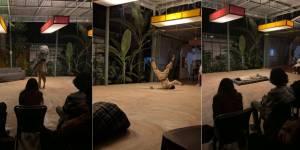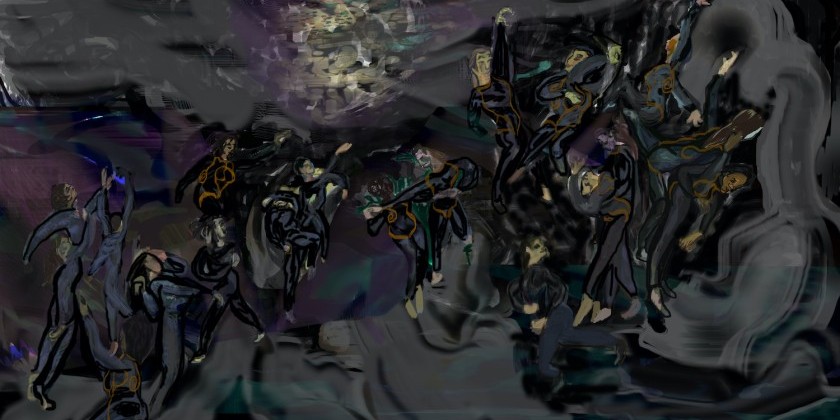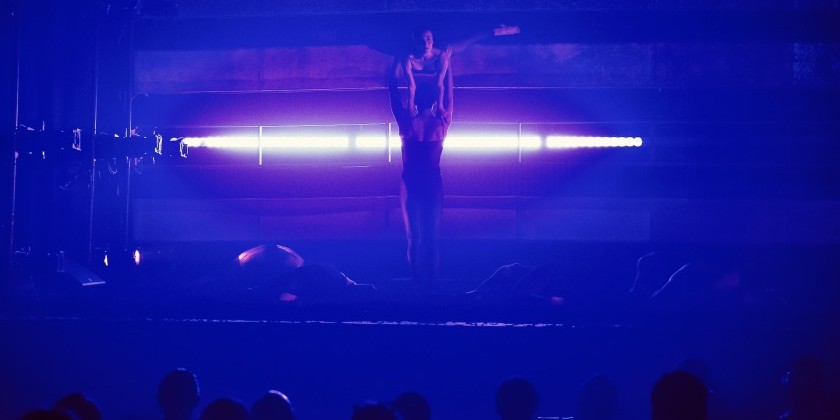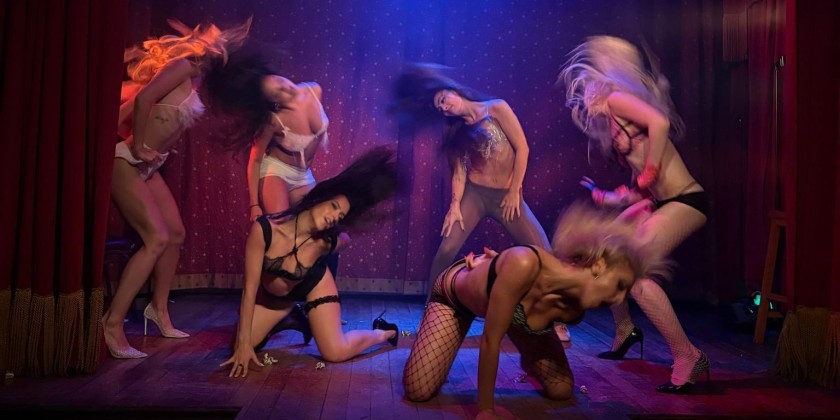AUDIENCE REVIEW: "Wave of Colors" by Yu.S.Artistry
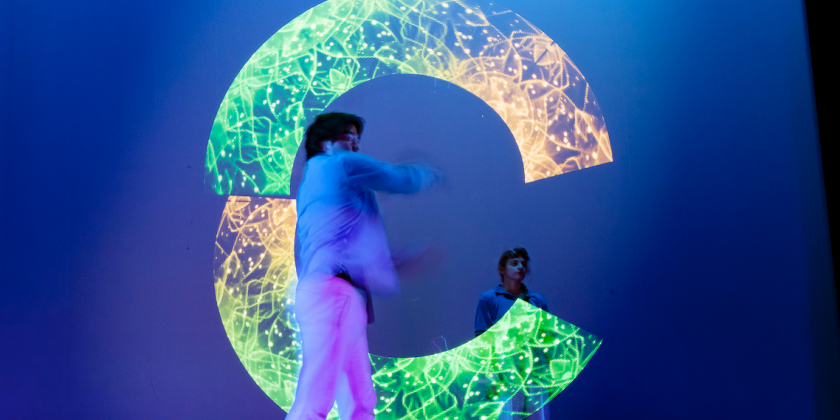
Company:
Yu.S.Artistry
Performance Date:
October 24, 2021
Freeform Review:
The Wave of Colors program by Yu.S. Artistry offered two whirlwind pieces titled The Inner Light (2019) and the world premiere of Wave of Colors (2021). Both pieces were choreographed by artistic director Yuki Ishiguro. With a brief pause between the dances, it appeared that the two works could be fused into an evening length piece, as they shared similar movement ideas and use of props. Both The Inner Light and Wave of Colors utilized the company’s strong, fluid dancers to showcase Yuki Ishiguro’s fusion style of ballet, contemporary, street performance, and break dance.
The Inner Light was danced by Charly Santagado, Yuki Ishiguro, Sophie Gray-Gaillard, Tsubasa Nishioka, and Catharine Messina. Charly Santagado, who opened The Inner Light with a solo, commanded the space with her staccato movement quality and focused presence. Her solo introduced many movement themes that recurred throughout the work: gestural hand material juxtaposed with floorwork and larger sweeping movements. After Charly was joined on stage by the remaining four dancers, I saw a series of partnering phrases, which alternated between two couples and one dancer observing the lifting sequences. The lifts created arcs in the air in correlation with the dancers creating arcs on the floor with their circular rolls and inversions. Much of The Inner Light was danced in non-unison, which created a busy but exciting space for the audience’s eye.
The Inner Light featured music by Burger Voigt, Shifted, Olafur Arnolds, and Ryuichi Sakamoto. While I had familiarity with two of these music artists, I did not find the music overpowering to the dancers’ movements. The music set an atmosphere — sometimes percussive, sometimes calm — but the dancers drove the piece’s mood equally. While The Inner Light appeared non-narrative, I could not help but wonder about any implications behind the usage of props. The dancers danced with glowing light, first as a small glow, and then on larger scale by Yuki Ishiguro, who created the illusion that he was dancing with fire. This moment was unexpected, exciting, and brief; I would have loved to see this idea explored further. At this time, the audience saw Yuki demonstrate his breakdance background, which contrasted The Inner Light’s previously introduced movement, but it was an exciting surprise.
While the dance was titled The Inner Light, the dancers’ intense focus on the physical light they were dancing with challenged me to wonder whether there was an equal importance placed on an outer light that the audience was granted to see. Charly, ending the piece just as she opened it, is seen holding the glowing light before the lights dissipated.
Wave of Colors was danced by Yu Fujiwara, Kat Bark, Olivia Passarelli, Sophie Gray-Gaillard, Namhui Kim, Joseph Heitman, and Tsubasa Nishioka. A stool was pre-set on stage before the piece began. Yu Fujiwara and Tsubasa Nishioka began Wave of Colors with a duet; while they danced beautifully together, Tsubasa’s character appeared to be in a believable struggle, ultimately executing most of his movements on the floor, while Yu’s character controlled where he danced. Tsubasa and Yu danced until they were in the upstage left corner, while they were joined on stage by the remaining dancers.
In contrast to The Inner Light, Wave of Colors offered more moments of unison dancing, even amongst partnering sequences. Namhui Kim and Joseph Heitman’s partnering particularly stood out because of their technical strength and freedom in movement. Each dancer executed the athletic movements with ease, with facial expressions free from drama. Because of the dancers’ neutral expressions, Wave of Colors appeared mostly non-narrative.
Following the group unison, Tsubasa Nishioka danced a beautiful solo with athleticism after he returned to the center of the stage. His sense of suspension was strong, as he carved the space with whipping turns, seamless inversions, and silent landings from enormous movements. I remember Tsubasa’s precision as he effortlessly balanced on one knee while his other leg was extended out in front of him, off of the floor, and his arms reached towards stage right.
Three dancers wore long black pants and grey tank tops, while the remaining dancers wore white shirts and pants. Often, those in the same costumes danced together. I did not gather a sense of conflict between the differentiating costumed dancers; however, Oliva Passarelli introduced a prop which appeared to be a glowing, changing-colored salt rock. The colored rock was a surprise, as was the glowing prop in The Inner Light, though in this piece there was more time to digest the presence of a prop. The dancers swept the space with the rock, and those who were not dancing with the rock kept their focus on it. Often, dancers would sit on the stool that was onstage to observe the rock or the others who were dancing. I was intrigued that the rock changed colors, which could indicate many different moods or ideas.
I enjoyed a moment when the seven dancers danced in unison towards the end of the piece. They created a V shape, with Yu Fujiwara leading the phrase. In this unison, Wave of Color’s exciting, athletic movements were summed up in a way that my eye could easily process because the dancers were executing the same movements. I left the piece curious about the glowing salt rock’s importance, but knowing that it was arguably precious to the dancers.
I was thrilled to see Yu.S.Artistry’s performance. It is always a pleasure to see live dance following the height of the coronavirus pandemic, and to see such exciting movement on such strong dancers was gratifying.
Author:
Kristen Hedberg
Website:
kristenhedberg.org
Photo Credit:
Brian Curry




